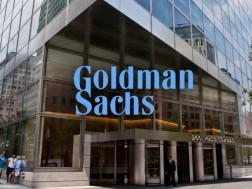Walgreens on Thursday reported fiscal second-quarter sales that beat Wall Street’s expectations, but lowered the high end of its full-year adjusted earnings outlook in part due to a “challenging” retail environment in the U.S.
The company also posted a steep net loss for the quarter as it recorded a hefty nearly $6 billion charge related to the decline in value of its investment in primary-care provider VillageMD. Walgreens has closed 140 VillageMD clinics amid financial woes for the business, which it sees as critical to its ongoing push to transform from a major drugstore chain into a large health-care company.
But Walgreens does not believe the VillageMD charge “will have a significant impact on our financial position, or our ability to invest across businesses going forward,” Walgreens global CFO Manmohan Mahajan said during an earnings call Thursday.
The results come as Walgreens’ new CEO, Tim Wentworth, works to slash costs and steer the company out of a rough spot with a slate of new executives. Shares of Walgreens fell 30% last year as the company faced weakening demand for Covid products, low pharmacy reimbursement rates, an unsteady push into health care and a challenging macroeconomic environment.
In a release Thursday, the company said it is confident it will meet its goal of saving $1 billion during fiscal 2024 through its ongoing cost-cutting program. Walgreens has laid off employees, closed unprofitable stores and used artificial intelligence to make its supply chain more efficient, among other efforts.
Here’s what Walgreens reported for the quarter, compared with what Wall Street was expecting, based on a survey of analysts by LSEG, formerly known as Refinitiv:
* Earnings per share: $1.20 adjusted vs. 82 cents expected
* Revenue: $37.05 billion vs. $35.86 billion expected
Walgreens narrowed its fiscal 2024 adjusted earnings guidance to between $3.20 and $3.35 per share. That compares with the company’s previous outlook of $3.20 to $3.50 per share. Analysts surveyed by LSEG expect full-year adjusted earnings of $3.24 per share.
Walgreens said the new guidance reflects the hurdles facing retailers in the U.S. and an early wind-down of its sales-leaseback program. It also takes into account lower earnings due to Walgreens’ forward sale of shares of drug distributor Cencora, formerly known as AmerisourceBergen.
The company said a stronger performance in its pharmacy services segment and a lower adjusted effective tax rate helped to offset the factors dragging on its earnings.
But Mahajan said Walgreens expects the current economic backdrop will “continue to negatively impact our U.S. retail sales in the short term.”
Wentworth noted on the call that the company is “exploring innovative ways to boost profitability and growth” in its retail pharmacy division, such as through new pharmacy reimbursement models.
The company did not give a new revenue forecast for the fiscal year. Walgreens has not provided that guidance since October, when it said it sees $141 billion to $145 billion in sales.
The company reported a net loss of $5.91 billion, or $6.85 per share, for the quarter. That compares with a net income of $703 million, or 81 cents per share, for the same period a year ago. a Excluding certain items, including the $5.8 billion non-cash charge related VillageMD, adjusted earnings per share were $1.20 for the quarter.
The company booked sales of $37.05 billion in the quarter, a roughly 6% jump from the same period a year ago.
Walgreens sees growth across all divisions
The company said that increase reflects sales growth across its three business segments. But Walgreens’ U.S. health-care division stood out as sales jumped about 33% in the fiscal second quarter compared with the same period a year ago.
Revenue for the segment came in at $2.18 billion.
The company said the higher sales reflect VillageMD’s acquisition of multispecialty care provider Summit Health and growth across all businesses in the segment on a pro-forma basis.
VillageMD sales grew 20% due to same-clinic growth, among other factors. Sales from the segment’s specialty pharmacy company, Shields Health Solutions, grew 13%, due to new contracts and expansions of current partnerships.
Specialty pharmacies are designed to deliver medications with unique handling, storage and distribution requirements, often for patients with complex conditions such as cancer and rheumatoid arthritis.
Meanwhile, Walgreens’ U.S. retail pharmacy segment generated $28.86 billion in sales in the fiscal second quarter, an increase of almost 5% from the same period last year.
That segment operates more than 8,000 drugstores across the U.S., which sell prescription and nonprescription drugs as well as health and wellness, beauty, personal care, and food products.
Walgreens said pharmacy sales for the quarter rose 8.2% compared with the year-ago quarter. Comparable sales climbed 8.7% due to price inflation in brand medications and “strong execution” in pharmacy services, largely driven by the company’s vaccine portfolio.
Total prescriptions filled in the quarter including immunizations totaled 305.7 million, a more than 2% increase from the same period a year ago.
Retail sales for the quarter fell 4.5% from the prior-year quarter, and comparable retail sales declined 4.3%. The company pointed to a challenging retail environment and a weaker respiratory season, among other factors.
Walgreens’ international segment, which operates more than 3,000 retail stores abroad, posted $6.02 billion in sales in the fiscal second quarter. That’s an increase of more than 6% from the year-ago period.
The company said sales from its U.K. subsidiary, Boots, grew 3%.
When asked on the call about Eli Lilly’s new direct-to-consumer website aimed at expanding access to its weight loss drug Zepbound, Wentworth did not comment on the program specifically.
But he noted that the company is a “natural partner” for pharmaceutical companies that may “want to go directly to patients for a particular product, where the normal supply chain, reimbursement model, et cetera isn’t working effectively.”
As an example, Wenworth pointed to GLP-1s, a new class of weight loss and diabetes drugs that includes Zepbound. Those drugs must be taken chronically but carry hefty price tags, which can be a hurdle for both patients and insurance plans and other payers.
Walgreens is “uniquely positioned” to distribute drugs and serve as a “clinically aligned partner” that can help patients navigate their treatment safely, according to Wentworth.
Source: CNBC
















